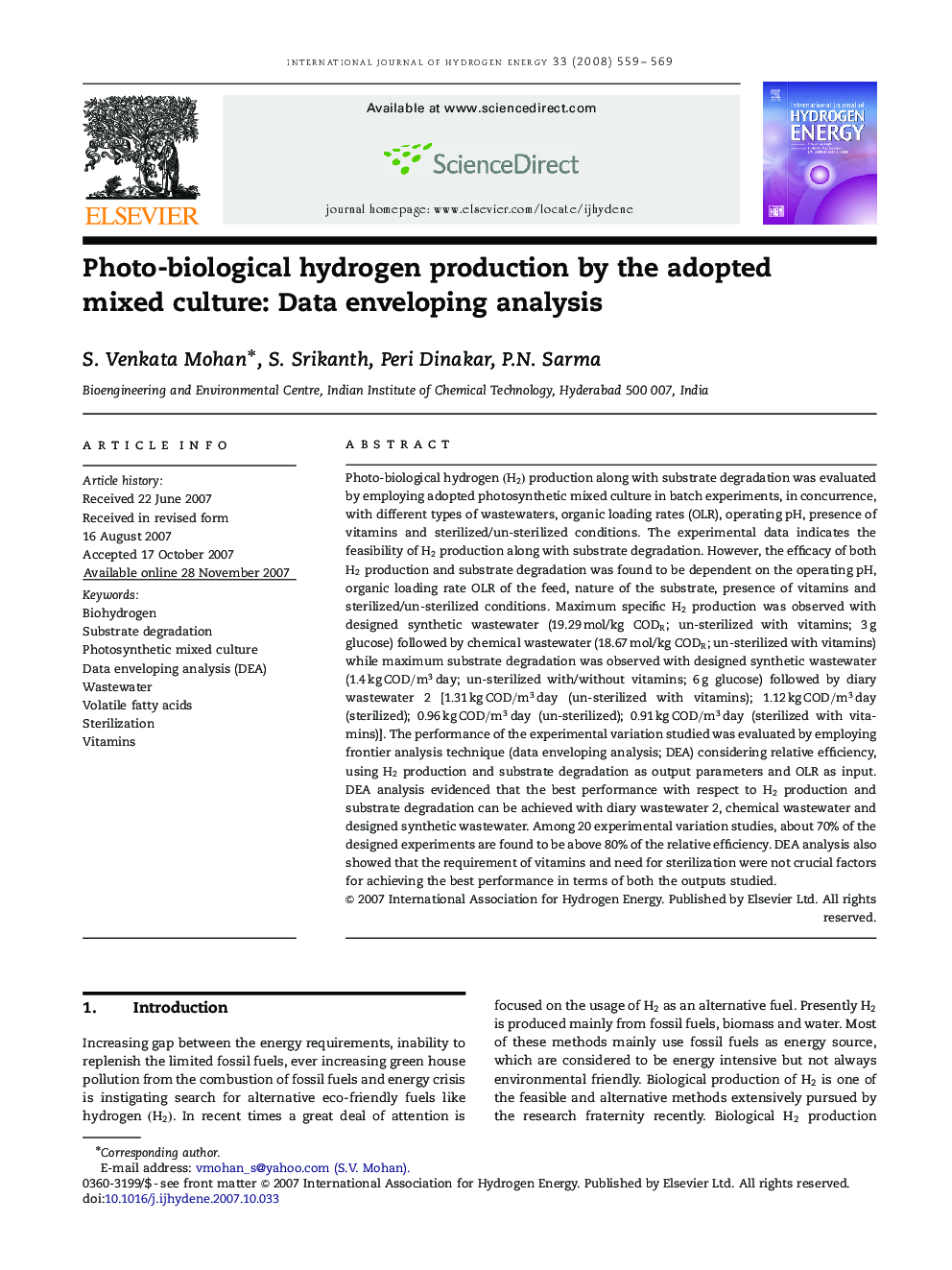| Article ID | Journal | Published Year | Pages | File Type |
|---|---|---|---|---|
| 1279981 | International Journal of Hydrogen Energy | 2008 | 11 Pages |
Photo-biological hydrogen (H2)(H2) production along with substrate degradation was evaluated by employing adopted photosynthetic mixed culture in batch experiments, in concurrence, with different types of wastewaters, organic loading rates (OLR), operating pH, presence of vitamins and sterilized/un-sterilized conditions. The experimental data indicates the feasibility of H2H2 production along with substrate degradation. However, the efficacy of both H2H2 production and substrate degradation was found to be dependent on the operating pH, organic loading rate OLR of the feed, nature of the substrate, presence of vitamins and sterilized/un-sterilized conditions. Maximum specific H2H2 production was observed with designed synthetic wastewater (19.29 mol/kg CODRCODR; un-sterilized with vitamins; 3 g glucose) followed by chemical wastewater (18.67 mol/kg CODRCODR; un-sterilized with vitamins) while maximum substrate degradation was observed with designed synthetic wastewater (1.4kgCOD/m3day; un-sterilized with/without vitamins; 6 g glucose) followed by diary wastewater 2 [1.31kgCOD/m3day (un-sterilized with vitamins); 1.12kgCOD/m3day (sterilized); 0.96kgCOD/m3day (un-sterilized); 0.91kgCOD/m3day (sterilized with vitamins)]. The performance of the experimental variation studied was evaluated by employing frontier analysis technique (data enveloping analysis; DEA) considering relative efficiency, using H2H2 production and substrate degradation as output parameters and OLR as input. DEA analysis evidenced that the best performance with respect to H2H2 production and substrate degradation can be achieved with diary wastewater 2, chemical wastewater and designed synthetic wastewater. Among 20 experimental variation studies, about 70% of the designed experiments are found to be above 80% of the relative efficiency. DEA analysis also showed that the requirement of vitamins and need for sterilization were not crucial factors for achieving the best performance in terms of both the outputs studied.
